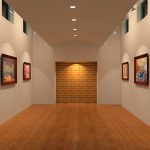Spinal stenosis is defined by the Mayo Clinic is a condition in which the channel of the spine experiences a narrowing from a variety of causes that include bone spurs, osteoarthritis, Paget’s disease, herniated discs, and spinal injuries. It is sorted into two distinct categories, cervical stenosis, and lumbar stenosis. In the case of lumbar stenosis, decompression surgery is a highly effective treatment in which the spinal canal is widened and no longer impinges on the spinal nerve. Signs of lumbar stenosis include symptoms that can be put down to neuropathy from a variety of medical issues, so it is crucial to have MRI imaging done to obtain a definitive diagnosis. Some of these symptoms are –
1. Numbness and tingling. This sensation is a feeling of having your foot “fall asleep.”
2. Weakness. Weakness may not be immediately noticeable and can cause falling incidents.
3. Lower back pain. This pain may be alleviated by leaning forward or bending over.
4. Leg pain. This pain may occur when standing or walking.
5. Leg cramps. Leg cramping may occur at any time, whether sitting, standing, or walking.
MRI imaging is key to making an accurate diagnosis of lumbar spinal stenosis, with the results conveyed to your care team in Maitland. Using open MRI, patients can be more comfortable during their imaging procedure preferably using axial loading during the MRI process. Axial loading takes a little extra time, , but gives an accurate simulation of gravity and its effects on the spine which is then used to create the image. The diagnostic ability of these images is superior and gives the orthopedic surgeon highly precise imaging of the patient’s spine. This accurate imaging technique enables a more accurate and effective surgery using minimally invasive methods to bring the patient relief from their symptoms and pain.





